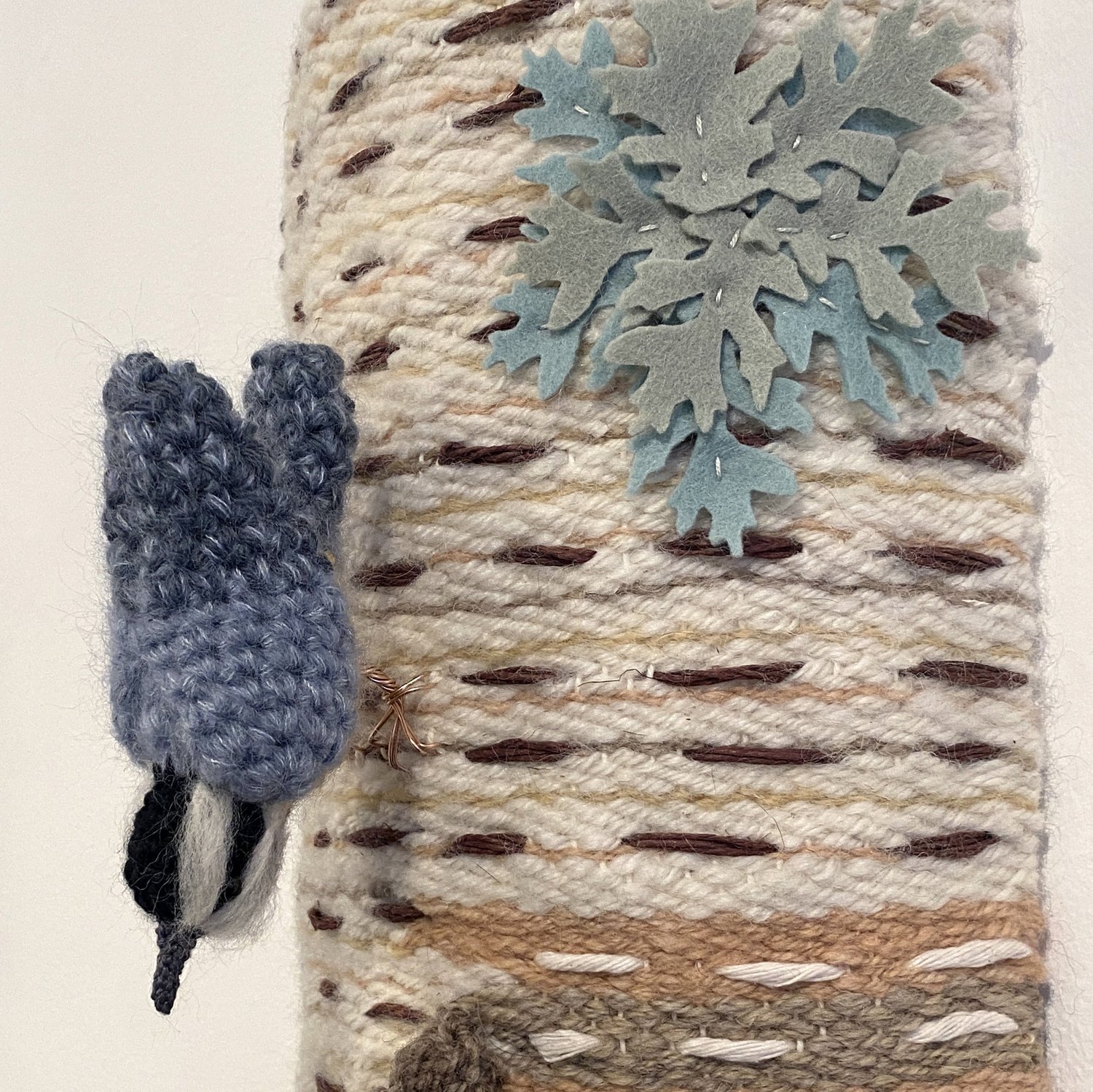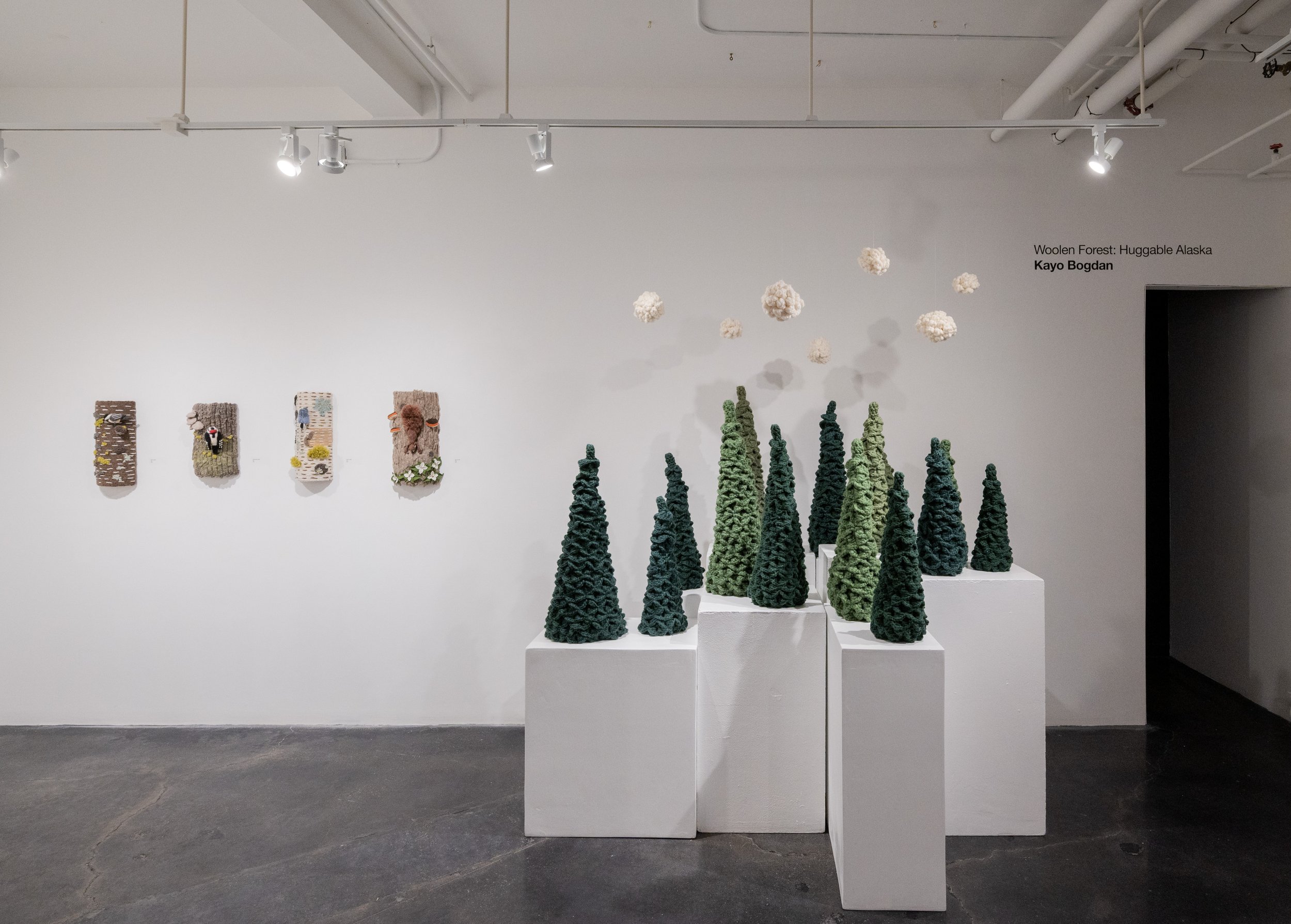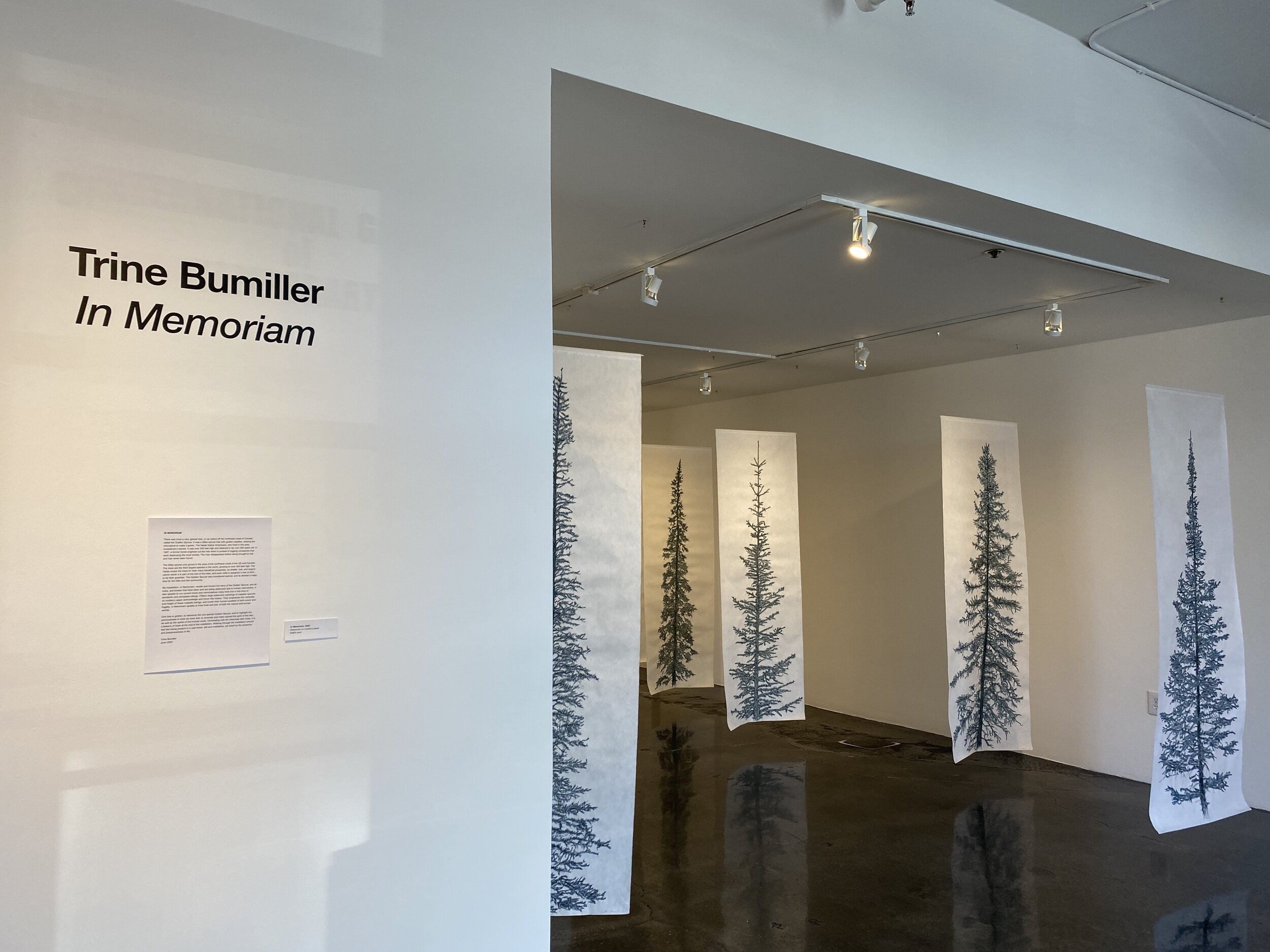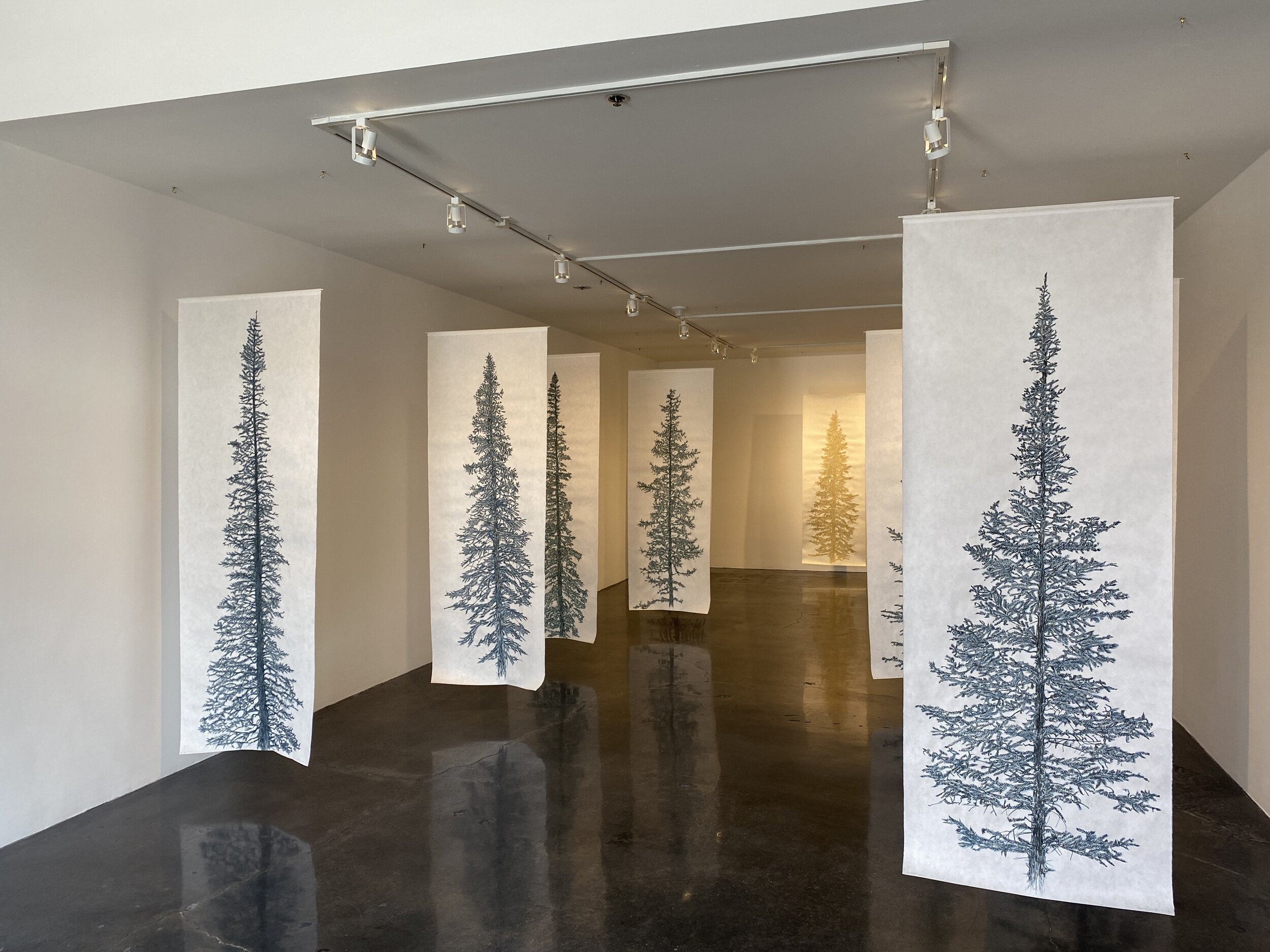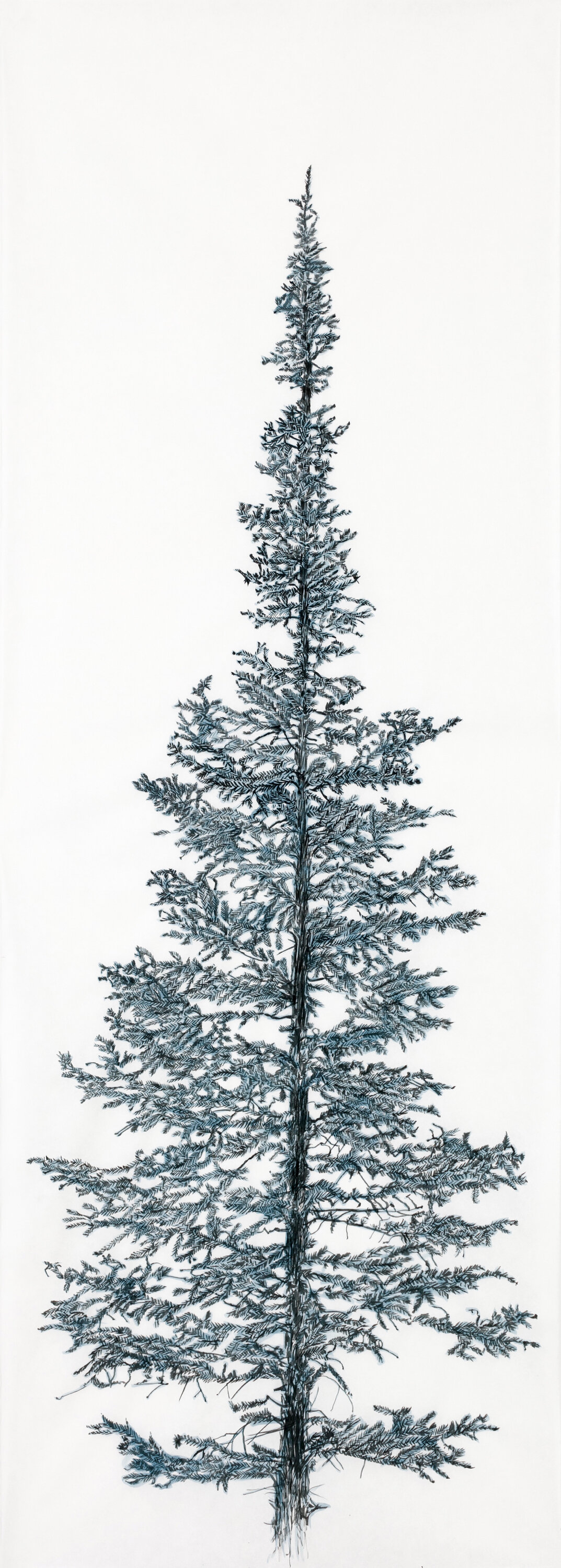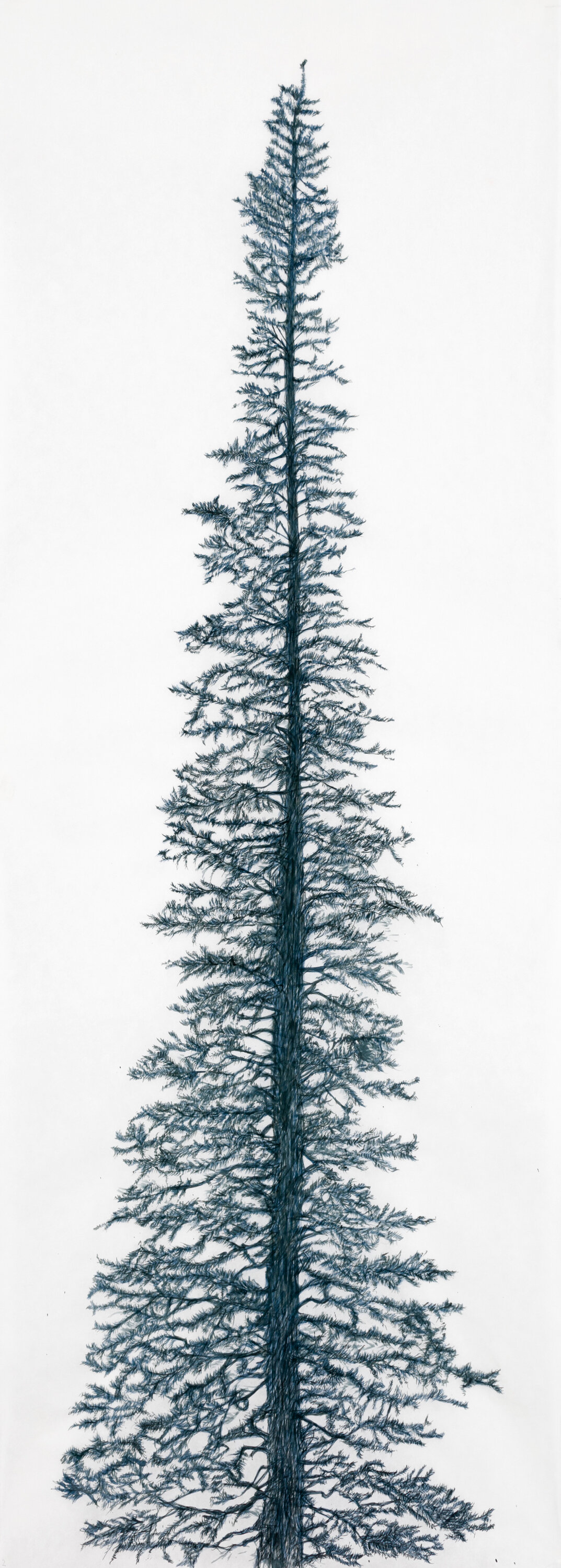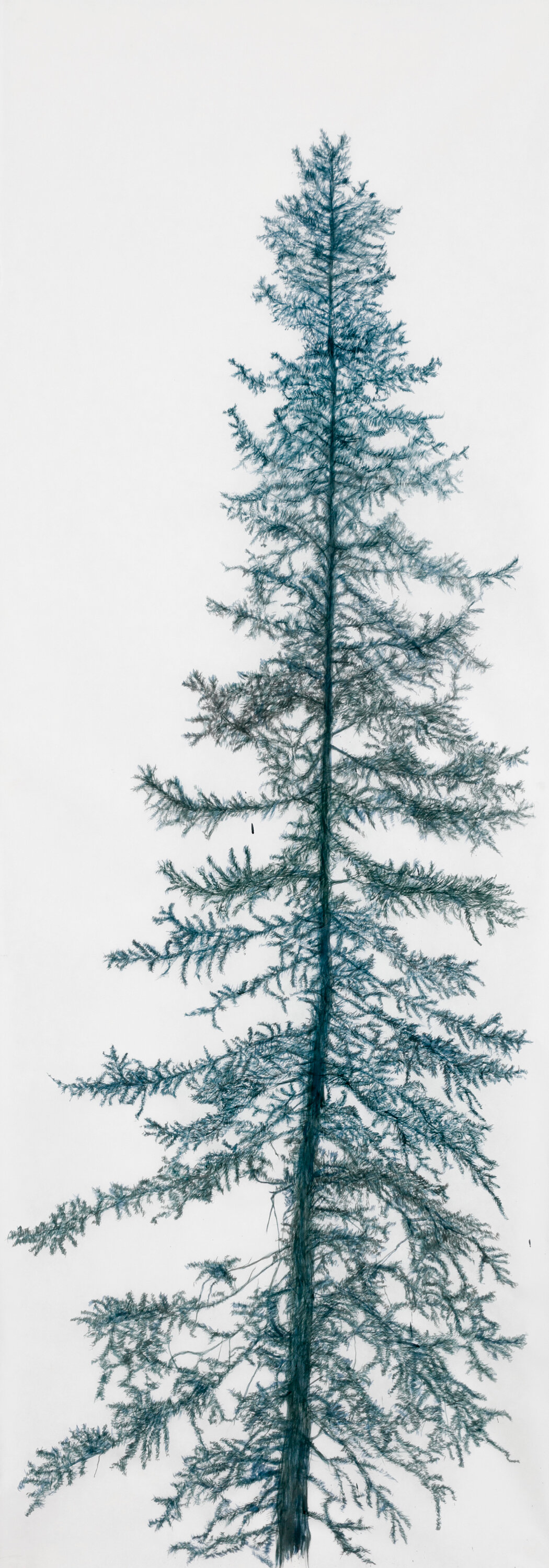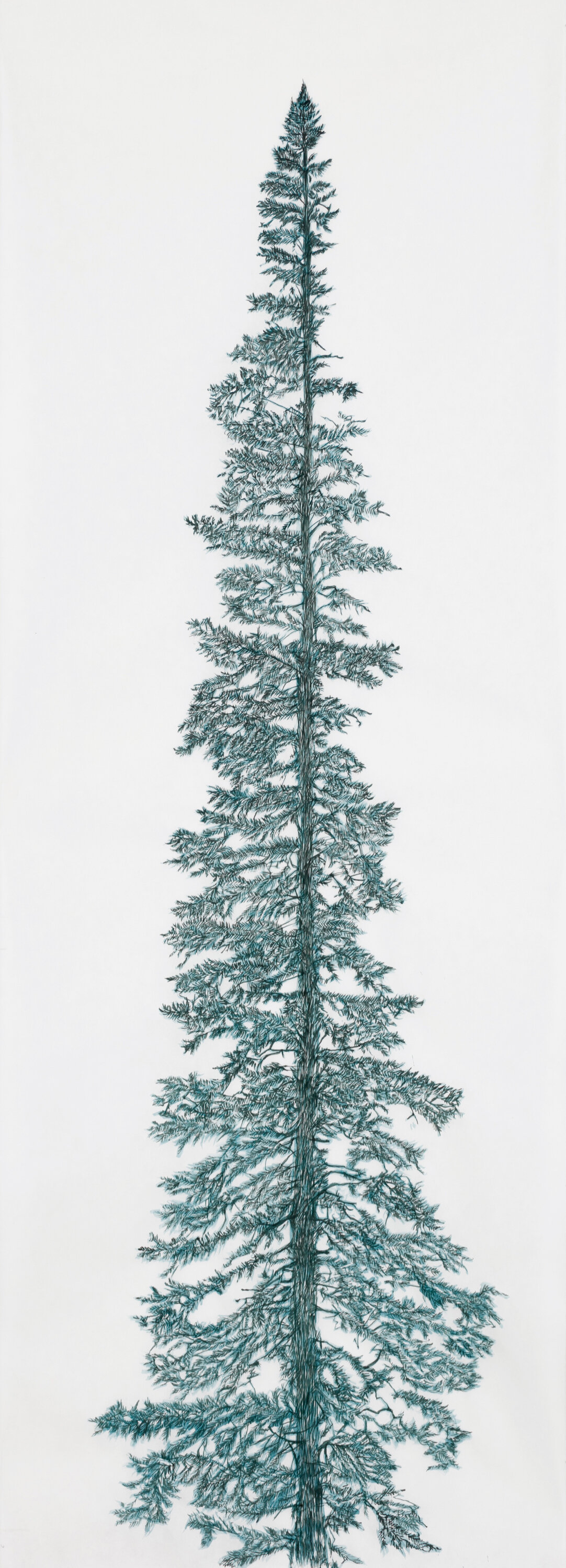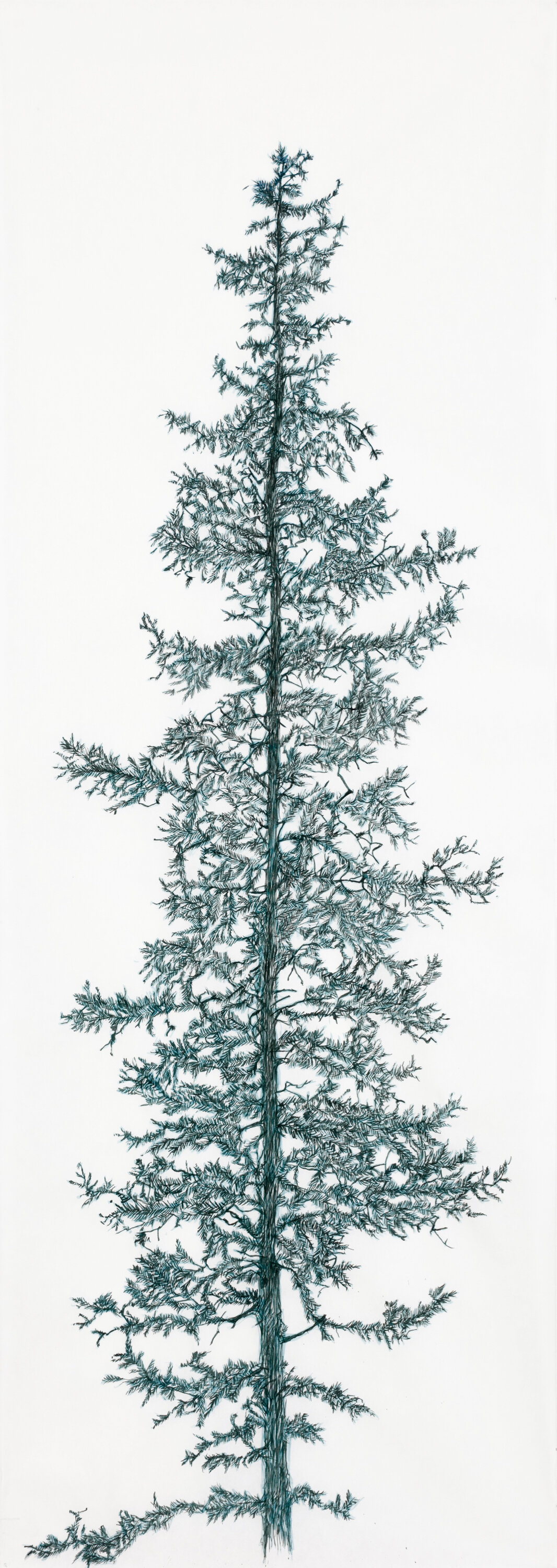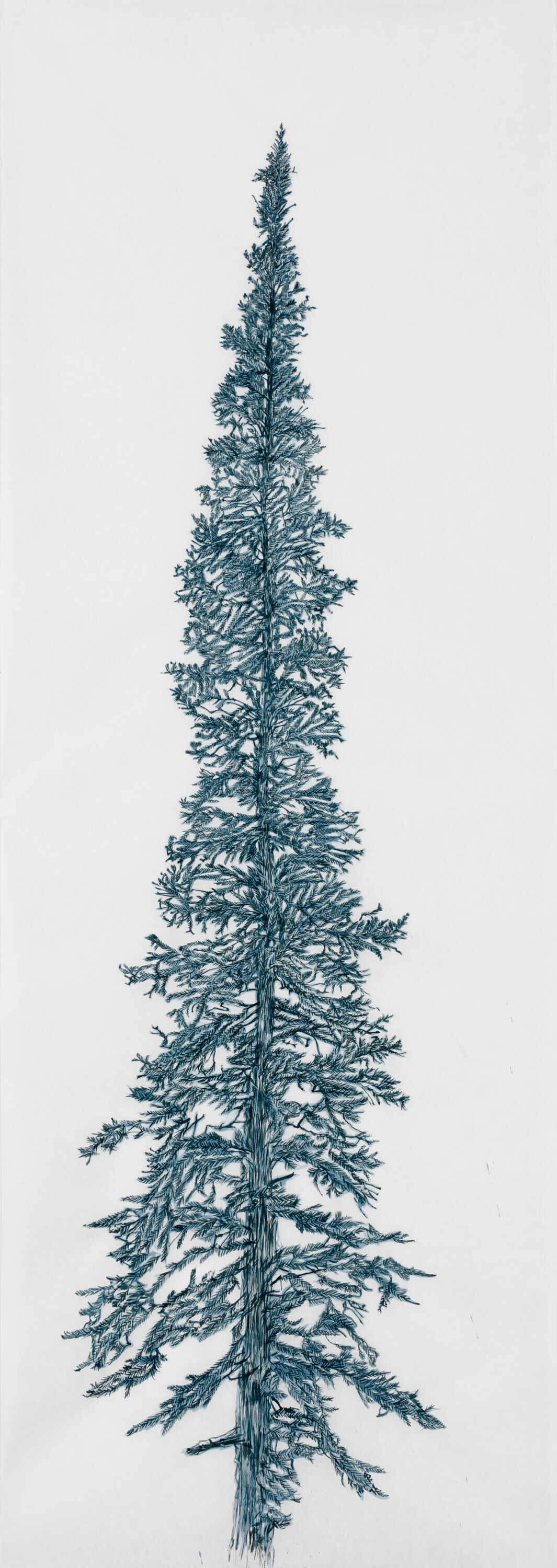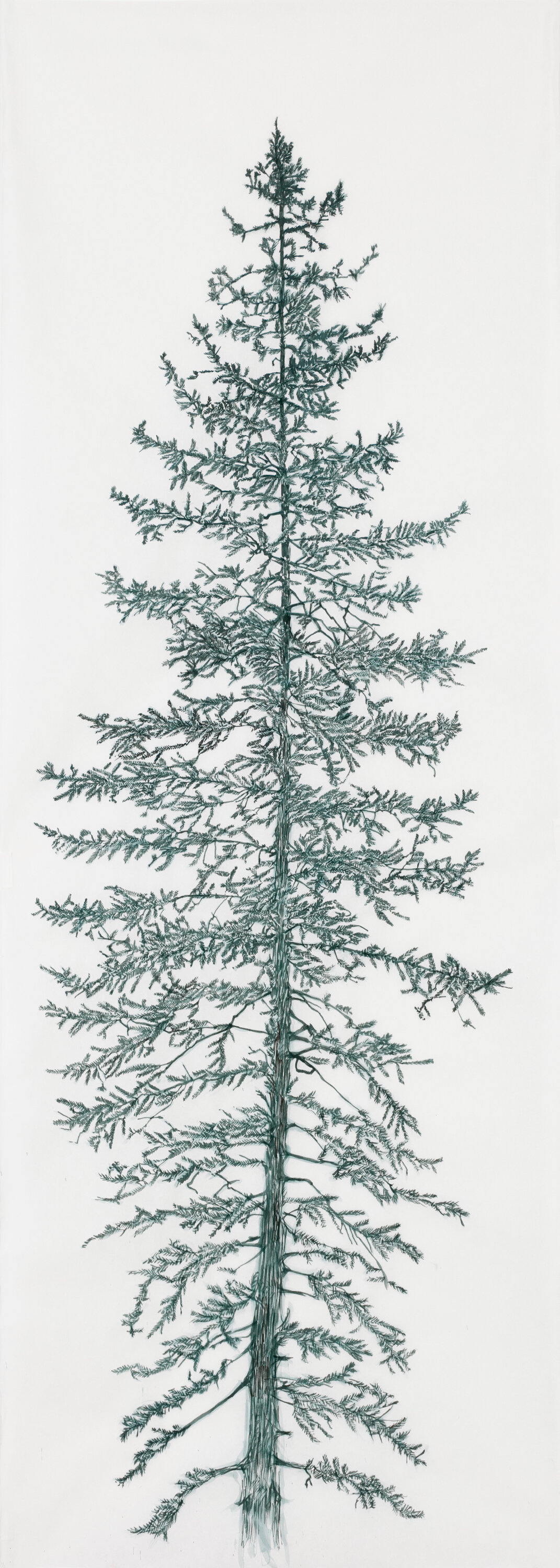JULY 2020
CENTER GALLERY
In Memoriam | Trine Bumiller
In Memoriam is an installation comprised of fifteen large watercolor paintings of spruces, one golden. Through the story of the Golden Spruce, it honors the memory of living things, both trees and humans, in a time when life seems more precious than ever.
Artist Statement
There was once a very special tree, on an island off the northwest coast of Canada, called the Golden Spruce. It was a Sitka spruce tree with golden needles, missing the chlorophyll to make it green. The Haida Native Americans, who lived in the area, considered it sacred. It was over 200 feet high and believed to be over 300 years old. In 1997, a former forest engineer cut the tree down in protest of logging companies that were destroying the local forests. The man disappeared before being brought to trial and has never been found.
The Sitka spruce only grows in the area of the northwest coast of the US and Canada. The trees are the third largest species in the world, growing to over 300 feet high. The Haida revere the trees for their many beneficial properties, as shelter, fuel, and dugout canoe wood; it is part of the lore of the tribe, and each child is assigned a tree at birth, to be their guardian. The Golden Spruce was considered sacred, and its demise a tragic loss for the tribe and the community.
My installation, In Memoriam, recalls and honors the story of the Golden Spruce, and all trees, and forests that have been and are being destroyed due to human intervention. It also speaks to our current times and memorializes many lives lost in this time of pandemic and senseless killings. Fifteen large watercolor paintings of majestic spruces on mulberry paper acknowledge and honor this history. They emphasize the verticality and height of these majestic beings, and evoke their human qualities of both power and fragility. In Memoriam speaks of lives lived and lost, of both the natural and human worlds.
One tree is golden, to reference the one special Golden Spruce, and to highlight the preciousness of what we have lost, to venerate and make sacred the spirit of the tree, as well as the spirits of lost human souls. Contrasting with the otherwise dark trees, it is a beacon of hope at the end of the installation. Walking through the installation should feel like being present in a vast forest, still and meditative, yet awed by the presence and precariousness of life.
www.trinebumiller.com

